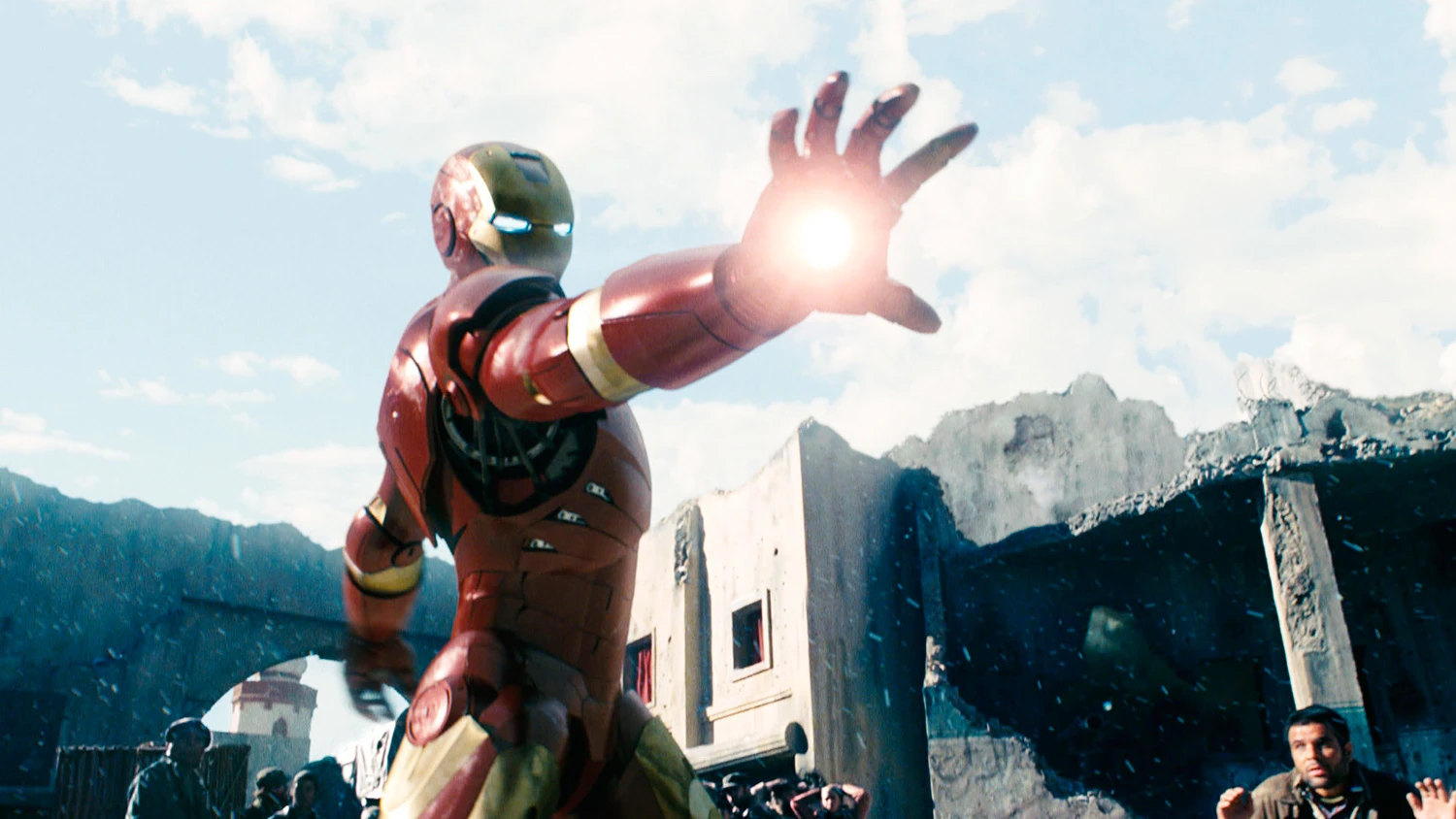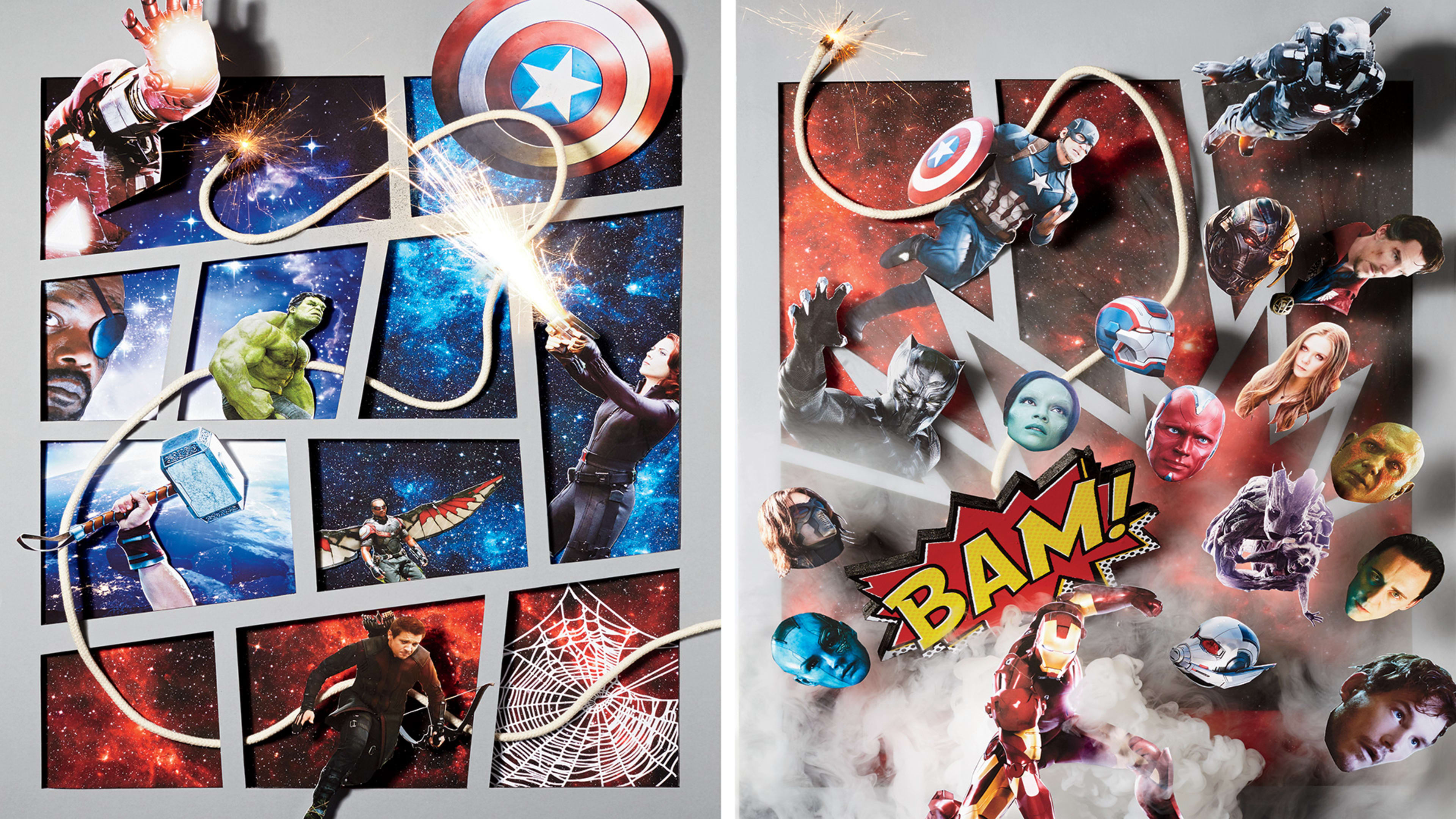A giant squidlike creature commands the screen and breathes fire. “The fate of the universe lies on your shoulders,” a voice-over intones, and for the next two minutes, viewers of the Guardians of the Galaxy Vol. 2 teaser trailer are treated to a mashup of exuberant space battles, cool gadgets, and comic vignettes, set to the 1975 power-pop anthem “Fox on the Run.” Marvel, the studio that created the Guardians franchise, posted the trailer online in December, five months before the highly anticipated sequel was due to hit multiplexes. Within 24 hours, the clip, featuring the film’s ragtag superhero vigilantes—a foulmouthed raccoon, a baby tree, and the hunky-but-relatable Star-Lord, played by Chris Pratt—racked up 81 million views. Even the song hit No. 1 on the iTunes rock chart. Hearing the news, James Gunn, who cowrote and directed both the first, $773 million–grossing Guardians and its sequel, jumped on Facebook to exclaim, “Holy crap!,” adding that the trailer was “the biggest Marvel Studios Teaser ever! No kidding—I’m, like, floored.”
For Marvel, though, outdoing itself has become something of a regular occurrence. When Guardians Vol. 2 hits theaters on May 5, it will mark the studio’s 15th movie since it started making its own nine years ago, and each one has been a hit. Just as impressive as Marvel’s box-office record (these films have grossed more than $10 billion globally): the billions more in revenue it has generated from toys, merchandise, fragrances, and even cruises (yes, there is a Marvel Day at Sea). Disney, which acquired Marvel in 2009 for $4 billion, has seen an impressive return on its investment.
The outsize success of the Marvel Cinematic Universe, as the company has dubbed its interlocking slate of films in which characters routinely overlap, is currently reshaping Hollywood in Marvel’s image. “Any press release about any movie these days comes with the term ‘cinematic universe,’ ” says Joe Keatinge, a comic-book writer who’s worked for both Marvel and DC Comics. “If Magnolia came out today, it would be part of a cinematic universe.” Universal, which is building a shared world around the movie monsters it first made famous in the 1930s and ’40s, such as the Invisible Man, Dracula, the Wolf Man, and Bride of Frankenstein, will release the first of its “Monsterverse” pictures, The Mummy, in June. Legendary plans to interconnect a different set of classic monsters such as King Kong and Godzilla; its initial effort, Kong: Skull Island, performed modestly in March. Meanwhile, Paramount is revisiting its Hasbro toy lines: The studio has outlined the next decade of Transformers movies, and it’s creating a separate universe around G.I. Joe, Micronauts, and M.A.S.K. (Mobile Armored Strike Kommand) vehicles. In March, Warner Bros. executives admitted that they were contemplating a return to The Matrix as grounds for a character universe, and Disney, which successfully revivified Star Wars, is thinking about a Tron-iverse.
Marvel, which has ramped up production to be able to make three movies a year, is proving that, if done correctly, these character universes can resemble successful technology platforms—ecosystems that enable both creative risk taking and significant growth and profits. But too often, other companies look at the winning result without appreciating the forethought that produced it. Look no further than Marvel’s arch nemesis, DC Entertainment, which, in conjunction with Warner Bros. (its parent company), has tried to catch up to Marvel by launching its own “extended universe” of characters. Last year, it released Batman v Superman: Dawn of Justice and Suicide Squad, both of which frustrated fans and fell short of $1 billion in global box office. Its Wonder Woman movie will arrive in June amid negative buzz and reports of a troubled production.
Marvel’s approach, then, has been easy to replicate but challenging to duplicate. What is the true essence of Marvel’s success? The answer lies in the way the studio trusts its instincts, jettisons formula, and constantly looks ahead to galaxies far, far away. Here’s how other companies can obtain these powers.

Have An Audacious Vision, But Don’t Rush It
Every superhero origin story starts with tragedy, and Marvel’s is no different: The company, then an independent comic-book publisher, filed for bankruptcy in 1996 following a steep downturn in the industry. In a shortsighted turnaround attempt over the next several years, it pursued harebrained licensing deals (such as authorizing a Hard Rock Cafe–style Marvel Mania chain restaurant), and it sold off movie rights in a scattershot manner to studios across Hollywood.
One of those companies was Artisan Entertainment (later acquired by Lionsgate), where Drew McWeeny, a screenwriter, recalls a meeting in the early 2000s with a new Marvel film executive named Kevin Feige about adapting a Marvel property. “I remember sitting in a room and [Feige] saying, ‘Look, in a perfect world, as the rights become available, little by little, we’ll start buying back all the Marvel characters, and maybe down the road, just like in the comics, we’ll get them to go into each others’ movies. And maybe we’ll even try to build to an Avengers.’ And I remember thinking, He’s crazy.”
Despite the best efforts of Feige and then-chairman and CEO Avi Arad, Marvel wasn’t able to buy back all the rights—Fox and Sony still retain the X-Men and Spider-Man franchises, respectively. But in 2005, Marvel became an independent studio thanks to a $525 million line of credit, and it brought all movie production in-house. Feige began to execute an intricate, multiphase plan for releasing various Marvel characters in a series of companion films that would ultimately collide in all-star affairs such as The Avengers. Not that audiences had any idea at first. Only true fans took note when, toward the end of Marvel Studios’ debut film, the smart and fun Iron Man, Samuel L. Jackson’s Nick Fury casually shows up. The interconnectivity became more apparent with each subsequent (well-received) movie, artfully laying the groundwork for 2012’s ensemble The Avengers.
This quiet, deliberate, decade-long planning stands in stark contrast to how DC has attempted to rival Marvel’s efforts. In October 2014, shortly after Guardians of the Galaxy became Marvel’s 10th smash, Kevin Tsujihara, the head of Warner Bros., suddenly unveiled a slate of 10 superhero films based on DC Comics. The first release after that announcement, the dreary Batman v Superman, is “perhaps the most egregious example of forcing a cinematic universe as opposed to letting it breathe for a very long time,” says Keatinge.
Feige’s patience is now being rewarded further: Marvel is regaining creative, if not sole financial, control over Spider-Man, by far its most valuable piece of original intellectual property. Marvel had sold off the rights to make Spider-Man movies to Sony in 1999 for a reported $7 million. Sony has made five movies featuring the webbed wonder, starting in 2002 with a trio of Tobey Maguire star turns. Its later pictures, featuring Andrew Garfield, were critical and commercial disappointments. Marvel approached Sony after the particularly lackluster fifth movie, 2014’s The Amazing Spider-Man 2, about buying back its prized character, but Sony demurred. The series needed a creative jolt, though, and the studios reached a deal: Sony would receive Marvel’s creative input on upcoming Spider-Man films, beginning with this July’s Spider-Man: Homecoming. In exchange, Marvel would get to incorporate Spidey into the Avengers universe; his first appearance was 2016’s Captain America: Civil War.
Fans, needless to say, are excited, and they are looking far ahead to 2018’s Avengers: Infinity War, which will feature Spider-Man. “When [Marvel] put up a video from the first day of shooting, I showed my kids. You’ve got Tom Holland as Spider-Man and Robert Downey Jr. standing on set talking to each other,” says McWeeny, who’s now also the publisher of the online film-geek magazine Pulp & Popcorn. “My kids lost their minds. Watching that reaction, I thought, Marvel’s got it locked.”
Make Surprise Your Superhero
Feige, who’s been the Marvel Studios president since 2007, develops movies based on a simple principle: Wouldn’t it be cool if . . . ? Wouldn’t it be cool if the movies could match comic books’ visual dynamism? Wouldn’t it be cool if they had equally crazy plot twists and potential for reinvention? Instead of a surprise on almost every page, the films Feige makes insert deft turns—in casting, plots, and even release dates—when viewers least expect them.
Many critics lump superhero movies together into their own genre, but in truth, Marvel movies defy such a simplistic classification. The first Iron Man and Captain America are essentially war movies; Iron Man 3 is a Bond-style thriller. More recently, Marvel has trotted out the space-set buddy action-adventure Guardians of the Galaxy, the science caper Ant-Man, and the fantasy-tinged Doctor Strange, all of which were decidedly weirder than the Avengers films that preceded them. (Similarly, Fox has begun to take risks with the Marvel characters it controls, moving in a darker, R-rated direction with Deadpool and Logan.)
Recognize your brand’s excellence by applying to this year’s Brands That Matter Awards before the early-rate deadline, May 3.
